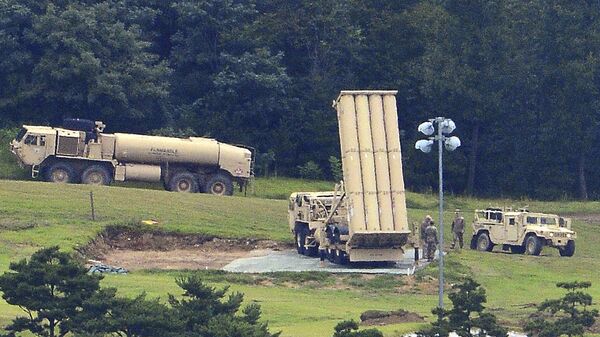"We can not confirm any new [THAAD] ballistic missile defense installations at this time," the Pentagon press service told RIA Novosti on Sunday.
The statement was apparently made in the wake of an exclusive piece by Reuters news agency, claiming that the ministry was planning to install extra defenses at West Coast sites, citing congressmen Mike Rogers, Adam Smith and Missile Defense Agency Deputy Director Rear Admiral Jon Hill.
The agency has described the move as a response to Wednesday's intercontinental ballistic missile launch by Pyongyang, which claimed that their new intercontinental ballistic missile (ICBM) put the entire territory of the US within its striking range. This information was confirmed by South Korea's Defense Ministry, which declared that the new Hwasong-15 intercontinental ballistic missile, provided it is fired at a normal angle, is capable of flying over 13,000 km, thus confirming Pyongyang's assertion.
READ MORE: Russian MPs Reveal How Pyongyang Views Moscow's Role in Nuclear Issue Settlement
The United States responded with new threats of using military force against the reclusive state. Speaking at an urgent UN Security Council gathering, US ambassador to the UN Nikki Haley warned that continued acts of Korean aggression could lead to a war that would leave North Korea's leadership "totally destroyed."
READ MORE: US Calls on All Nations to Cut Off Ties With North Korea
In late October, the US had officially completed the deployment of THAADs in South Korea as part of the country's 2016 agreement made amid growing tensions spurred by North Korea's ballistic and nuclear tests. This move has met strong opposition from China and Russia, which have cited national security concerns.
The anti-missile system is designed to intercept short, medium and intermediate ballistic missiles at the terminal incoming stage.

